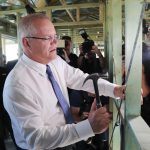Our City Leaders’ 7 biggest challenges when cutting traffic congestion
If we really want to ease traffic congestion in our cities, we need to make sure we all have all the information we need to make a change. Rachel Smith has asked our City Leaders about the biggest challenges ahead.
Earlier this year The Guardian newspaper revealed the average London commuter loses 83 hours a year to traffic congestion, whilst an infographic from www.collegeathome.com suggested commuters who travel more than 45 minutes a day are 40% more likely to divorce. Meanwhile, shortening your commute by just 20 minutes could literally save your life.
I’m passionate about making sure our City Leaders, Mayors and Councillors have all the information and tools they need to cut traffic congestion, without incurring the expense of new roads or annoyed residents. Earlier this year I conducted hundreds of telephone and email interviews with academics, planning professionals, public servants and business owners to get to the very core of the problems and challenges we face when trying to reduce traffic congestion in Australian (and all western) towns and cities. I also interviewed many City Leaders, Mayors and Councillors. I asked them “What are the three biggest challenges you face in cutting traffic congestion?”
Following my research I have put together our City Leaders’ 7 biggest challenges in cutting traffic congestion:
- Providing good public transport
Our City Leaders believe providing alternative travel options to private motor vehicle use is the biggest challenge and that good public transport is an essential ingredient in reducing congestion. Large-scale public investment in public transit and real incentives to encourage men, women and children to use public transport were identified as two solutions.
- Integrating transport and land use planning
City Leaders said the integration of transport and land use planning, as well as planning for the future was a big challenge. Changing urban patterns so less people need to travel too far and increasing residential developments along major transport corridors were suggested as ideal solutions.
- Restricting car use and car parking
Many Mayors said many of their residents believe they have a right to drive their car to work and to park near their work place at no expense. Restricting car use and car parking, following cities such as Bogota, where people are only allowed to drive into the city 40% of the time (2 weekdays per week), was identified as a solution, in a long list of potential solutions.
- Messaging that the car is the only desirable mode of transport
People in Australian cities, like most Western cities, have a love affair with their cars. Mayors and Councillors said their communities are given the message from media and advertising that the car is the only desirable mode of travel.
- Building infrastructure for all modes of transport
We need to build appropriate and safe infrastructure for all modes and multiple modes of transport – especially walking and cycling – to encourage people to use other forms of transport and not just private vehicles. Many City Leaders said if a city is building a new road they should also put in bus infrastructure, a cycleway and good pedestrian facilities.
- Getting businesses to stagger working hours
Another challenge identified by our leaders is the need to encourage businesses to see the value of staggered working hours, working from home and flexible working patterns for employees, thereby reducing peak hour demand on road and transport networks.
- Convenience of the car
A huge challenge for Mayors and Councillors is getting residents to really think about their modes of travel and transport for the various aspects of their daily lives. Mayors want people to ask themselves, “Can we walk to school once a week?” “Could we ride our bikes to the café on Sundays?” “Can I car pool to work once a week?” “Could we use a bus service to get to the Saturday afternoon sports match?”
If we really want to ease – or cut – traffic congestion in our towns and cities, we need to make sure we all have all the information and tools we need to make a change. That way we’ll all have more time each day, less stress and a few more years to live!
Do you agree? What do you think is the biggest challenge?
My first book “Decongestion – 7 steps for City Leaders to cut traffic congestion, without the expense of new roads or annoyed residents” (the book is a how-to and why-to guide for Mayors, City Leaders and Councillors) will be on sale from mid February 2015 in paperback and e-book formats. To pre-order your own hand signed copy please email me now Rachel.smith@aecom.com.
Rachel Smith is the author of 2 books (Decongestion and Underspent), speaker and Principal Transport Planner at AECOM in Brisbane. She has spoken at more than 200 conferences, has 2 TEDx talks and her work has appeared in international media including the BBC, ABC, DW-TV, SBS, Disney Channel and The Economist. She was part of the BMW Guggenheim Lab, developed the first crowd solving bicycle map and won the CIHT BP Road Safety Award and AITPM Janet Brash Memorial Scholarship.











outsourcingbbw
January 21, 2015 at 1:14 pm
Thanks you
Hello, Rachel Smith, this are the major facts on traffic congestion, thanks for sharing